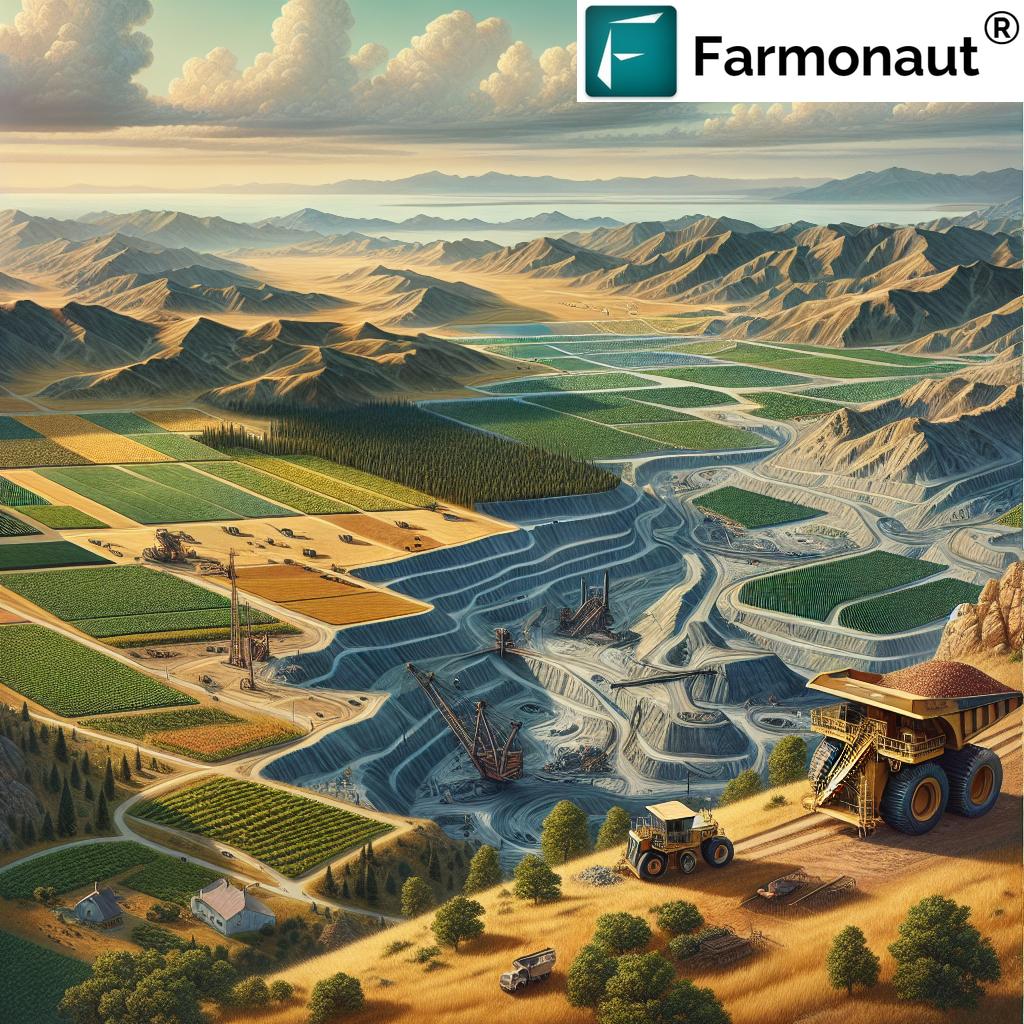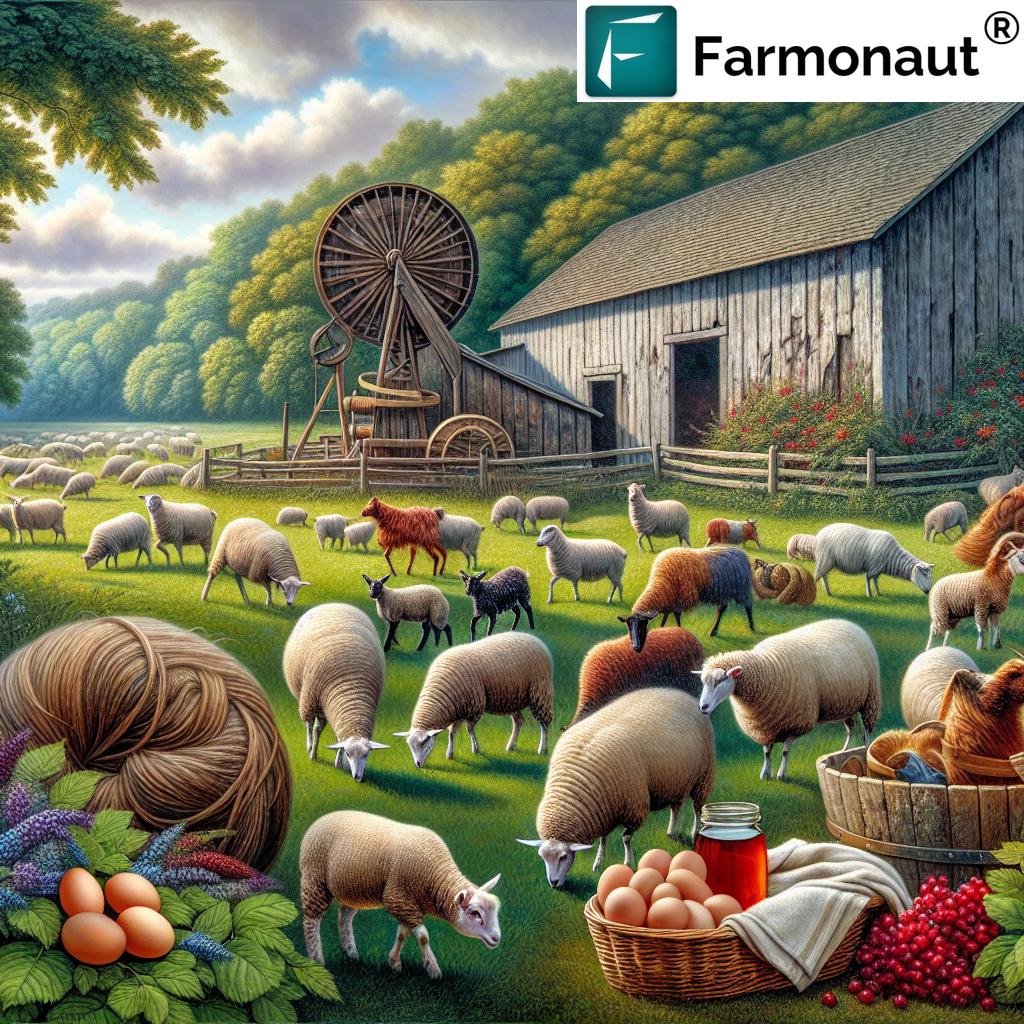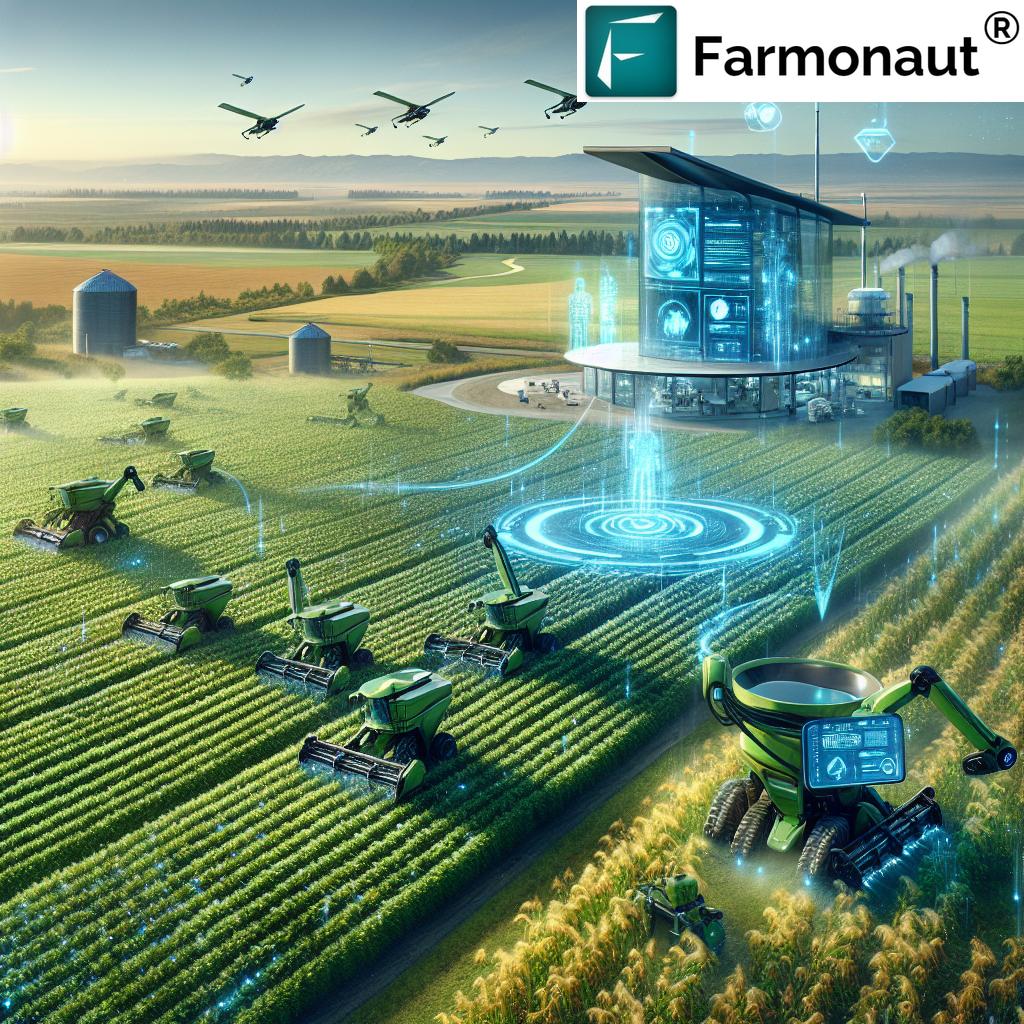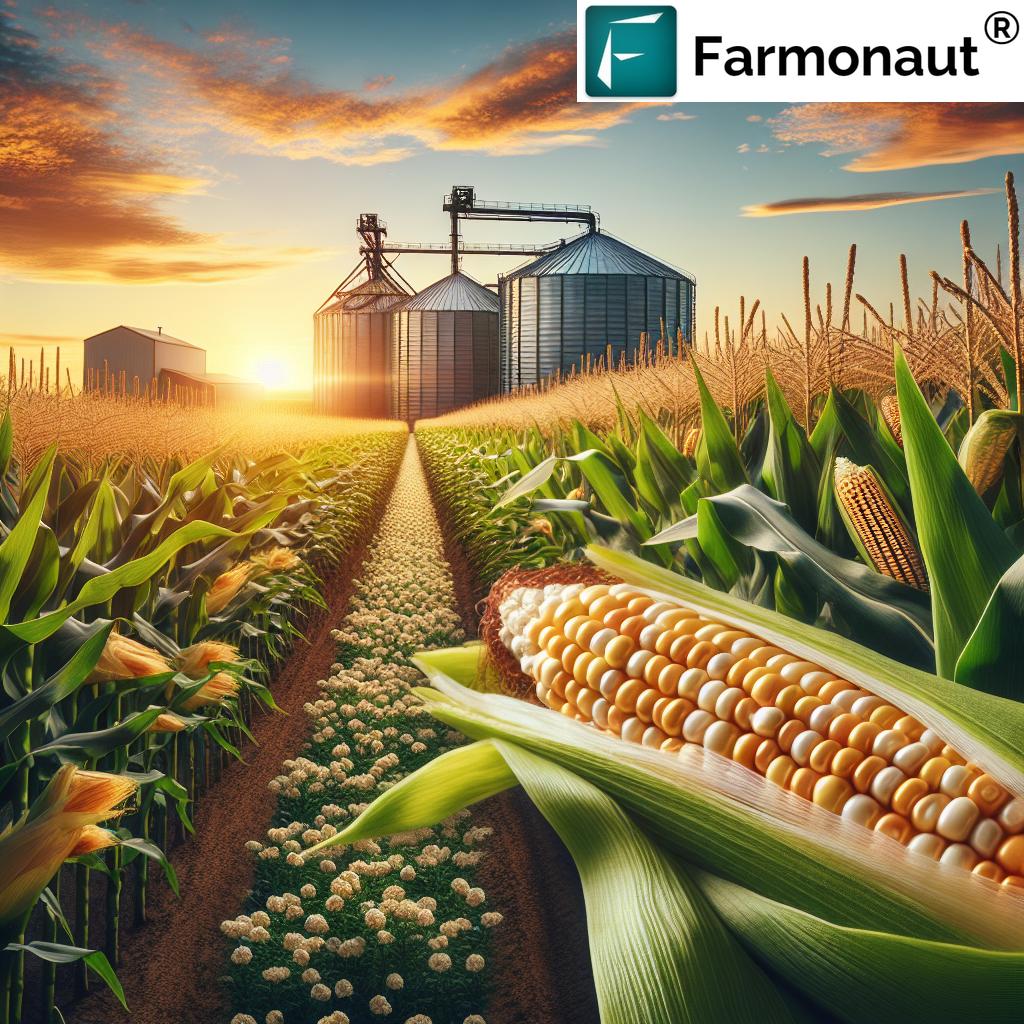Saffron Farming & AI: Transforming India and USA in 2025
Summary: Saffron farming in 2025 is standing at the threshold of a major revolution, thanks to technological innovation and artificial intelligence. Whether in the traditional Kashmir valleys of India or the emerging saffron fields in Utah, USA, AI is redefining every stage of saffron cultivation—from soil health monitoring to optimized harvesting and global market integration. In this comprehensive guide, we explore how ai in saffron farming is boosting crop yield, quality, and sustainability, with an in-depth look at the latest tools, region-specific trends, and the outlook for farmers in both India and the USA.
Table of Contents
- Trivia: The AI Revolution in Saffron
- The Traditional Landscape: Saffron Farming’s Rich History
- AI in Saffron Farming: A New Era of Agricultural Innovation
- Estimated Impact of AI on Saffron Farming in India & USA (2025)
- Saffron Farming India: Kashmir and Beyond
- Saffron Farming in USA: Utah, Pennsylvania & Expanding Horizons
- Key AI Technologies & Tools Shaping Saffron Agriculture
- Featured Videos: AI & Saffron Farming
- Farmonaut: Empowering AI-Driven Saffron Farming
- Future Outlook: Sustainability, Yield, and Economic Viability
- FAQ: Saffron Farming, AI, and the Future
- Farmonaut Subscription Options
Did You Know?
The Traditional Landscape: Saffron Farming’s Rich History
Saffron, often dubbed “red gold”, is one of the world’s most valuable and labor-intensive spices, cultivated mainly in regions like India (especially Kashmir), Iran, Spain, and now, increasingly, the United States. Its value stems from the delicate nature of the Crocus sativus flowers, which only yield three stigmas (the precious saffron threads) per bloom.
- Unique Flavor & Aroma: Saffron is renowned for its unique flavor, aroma, and medicinal properties.
- Labor-Intensive Harvests: Only a tiny portion of the plant (three stigmas per flower) is harvested, making the harvesting window very short and laborious.
- Specific Demands: Successful saffron cultivation demands cool, dry autumns, well-drained soil, and meticulous care—factors essential to high yield and quality.
- Global Supply: While Iran and Spain continue to dominate global supply, Kashmir remains one of the most renowned producers for premium saffron quality.
Saffron farming is notoriously challenging due to environmental sensitivity, labor intensity, and risks like pest and disease outbreaks, water stress, and pricing volatility. In recent years, saffron farming in USA (notably in Utah and Pennsylvania), driven by a niche interest in high-value crops and local agriculture innovation, has begun to reshape the global saffron map.
AI in Saffron Farming: A New Era of Agricultural Innovation
2025 marks a turning point for saffron agriculture. With the arrival of ai in saffron farming—artificial intelligence tools, sensors, drones, and analytics—the sector’s most persisting challenges can now be addressed with unprecedented precision and scalability.
How is AI Transforming Traditional Saffron Agriculture?
-
Precision Irrigation & Soil Health Monitoring
AI-powered soil sensors constantly monitor moisture, nutrient levels, and temperature—vital for a delicate crop like saffron. Algorithms process this data to optimize irrigation schedules, reducing water wastage, and improving the health of bulbs and flowers.
-
Automated Pest & Disease Detection
AI models combined with drones and cameras allow for early detection of pest outbreaks and disease symptoms, targeting only affected areas and significantly reducing chemical use. Quick action saves both yield and quality.
-
Optimized Harvesting & Yield Prediction
AI analytics predict optimum flowering periods based on real-time climatic and phenological models, helping farmers mobilize labor just in time, minimizing stigma loss, and maximizing harvest quality.
-
AI-Driven Grading & Market Insights
Image recognition enables fast, accurate grading of saffron—assessing color, size, and purity. Market analytics connect farmers to international demand, helping secure premium prices while maintaining provenance and authenticity.
The integration of AI into saffron cultivation is not just an upgrade, but a revolutionizing approach—enhancing productivity, reducing labor strain, and setting the foundation for long-term sustainability.
Estimated Impact of AI on Saffron Farming in India & USA (2025)
| Country | Traditional Saffron Yield (kg/hectare, est.) |
AI-Enhanced Yield (kg/hectare, est.) |
Traditional Crop Quality (Grade/Score, est.) |
AI-Enhanced Quality (Grade/Score, est.) |
Sustainability Improvement (% reduction in water/fertilizer, est.) |
Projected AI Adoption Rate (% of farmers, est.) |
|---|---|---|---|---|---|---|
| India (Kashmir, Jammu) | 7-9 | 9-11.5 | A–B (80/100) | A+ (95/100) | 18–24% | ~58% |
| USA (Utah, Pennsylvania, select states) | 5-7 | 6.5-9 | B (75/100) | A–A+ (92/100) | 16–21% | ~67% |
Saffron Farming India: Kashmir and Beyond
In India, saffron has been cultivated in Kashmir and Jammu for over 2,500 years—these regions are known for high-quality saffron with distinct flavor and aroma. Traditionally, saffron farming India faced obstacles like declining productivity, climate unpredictability, and labor shortages.
AI’s Impact on Indian Saffron Cultivation (Kashmir, Jammu)
-
Enhanced Yield & Crop Health:
AI-powered sensors and platforms provide insights into soil moisture, nutrients, and environmental stress, allowing for precision irrigation and reduced wastage. -
Combatting Pest & Disease:
Automated detection systems identify early signs of infestations and fungal attacks, minimizing damage and unnecessary pesticide use. -
Labor Efficiency:
AI models predict the optimal flowering period, helping farmers organize labor for harvesting precisely during the short bloom. -
Market Access & Grading:
Digital grading and traceability tools help producers in Kashmir command higher prices by demonstrating quality and origin to global buyers. -
Government Support:
Policy efforts in India increasingly include incentives for AI adoption, supporting smallholders and cooperatives in deploying affordable AI-powered solutions.
The Farmonaut Crop Plantation and Forest Advisory tool offers real-time satellite-based insights to optimize crop care, water scheduling, and risk monitoring for Indian saffron farmers.
Saffron Farming in USA: Utah, Pennsylvania & Expanding Horizons
Saffron farming in USA is a relatively new but rapidly growing niche sector. While Utah has gained media attention for its high-altitude experiments, Pennsylvania and other states are seeing a rise in small-batch farms driven by culinary and wellness trends.
AI Advancements Tailored for American Saffron Cultivation
-
Greenhouse Optimization:
With distinct climates in Utah and other states, ai in saffron farming helps simulate ideal conditions for flowering and quality using smart greenhouse management. -
Soil Health & Water Use:
American saffron farmers rely on advanced sensors and satellite-data platforms to manage moisture and nutrients, maximizing yield with minimal input. -
Labor Management:
AI analytics streamline harvesting scheduling for smaller, often family-run farms, making the labor-intensive process more manageable. -
Traceability & Premium Marketing:
By integrating blockchain-backed traceability and AI-guided grading, American producers ensure transparency and quality assurance for consumers.
Explore the Farmonaut Product Traceability solution to ensure authenticity and premium pricing for US saffron farmers by leveraging blockchain-backed supply chain records.
Key AI Technologies & Tools Shaping Saffron Agriculture
A comprehensive integration of technologies is fundamental to saffron farming success in 2025. Below are the most impactful innovations fundamentally reshaping saffron cultivation in India and the USA:
1. AI-Based Satellite Monitoring
- Provides real-time views of crop health, soil status, and environmental stress using multispectral satellite imaging.
- Enables proactive, data-driven decisions on irrigation, fertilization, and disease management.
- Farmonaut Satellite API delivers these capabilities directly to app developers and agritech platforms.
2. Precision Irrigation Systems
- Sensors and AI models assess real-time moisture and nutrient levels in the soil, guiding efficient water schedules and reducing wastage.
3. Early Pest and Disease Detection
- Drones and vision-based AI algorithms scan fields for early signs of pest or fungal attack to prevent widespread crop damage.
4. AI-Powered Quality Grading
- Unique grading models assess color, thread uniformity, and purity, helping farmers achieve higher grades and market prices.
5. Supply Chain Integration
- Blockchain and AI systems ensure traceability, connecting producers in Kashmir or Utah with global markets transparently.
For businesses managing extensive saffron fields or processing centers, the Farmonaut Large Scale Farm Management System supports robust remote management with satellite insights and data-driven tools.
For climate-oriented solutions, Farmonaut Carbon Footprinting helps saffron producers measure, manage, and offset field-level emissions, enhancing sustainability benchmarks vital for international trade and consumer trust.
Featured Videos: AI & Saffron Farming
Farmonaut: Empowering AI-Driven Saffron Farming
As a pioneering satellite technology company, we at Farmonaut play a transformative role in accelerating the integration of ai in saffron farming globally. Our mission is to make satellite-driven insights accessible and affordable for farmers, agribusinesses, and governments, with a portfolio that includes:
- Satellite-Based Crop Monitoring: Multispectral imagery and analytics assess saffron health, soil status, and environmental impact in real-time.
- Jeevn AI Advisory: Our AI system provides real-time weather forecasts, crop-specific strategies, and actionable insights to enhance productivity and reduce risks for saffron farmers in India, USA, and beyond.
- Blockchain Traceability: We facilitate secure, transparent supply chains, allowing saffron producers to prove provenance and ensure high grade authenticity in world markets.
- Environmental Impact Monitoring: Tools to measure carbon footprint, manage resources, and enhance sustainability at the field and cooperative level.
- Fleet & Resource Management: Optimize equipment use, logistics, and reduce operational costs for saffron cultivation at any scale.
- APIs and Platform Integrations: Developers, agri-startups, and major value-chain players integrate our AI and satellite data via Farmonaut API Developer Docs.
- Crop Loan & Insurance Support: Our satellite-based solutions help financial institutions assess saffron field risk and process credit/insurance efficiently. See our benefits at Crop Loan and Insurance.
Start Monitoring Your Saffron Fields:
- Track saffron crop health, schedule irrigation, detect early warning signs, and access AI-driven advisories—all from your phone or desktop.
- Connect globally with data-driven traceability and sustainability metrics.
Future Outlook: Sustainability, Yield, and Economic Viability
The fusion of ai in saffron farming with traditional wisdom in India and new innovation hubs in the USA reshapes the sector’s future:
- Climate Resilience: As global climate events (unusual rainfall, heat) become more common, AI helps farmers anticipate and quickly adapt using real-time data for water, soil, and crop management.
- Next-Gen Youth Engagement: With smart farming technologies, younger, tech-savvy farmers are now entering the saffron business, boosting rural economies and promoting knowledge transfer.
- Improved Economic Viability: Enhanced yield, better grading, and transparent supply chains increase profitability both in Kashmir and Utah—paving the way for wider saffron adoption beyond traditional regions.
- Consumer Demand & Traceability: AI enables robust traceability, addressing rising consumer concerns for authenticity, sustainability, and ethical sourcing in the global saffron trade.
- Environmental Stewardship: Smart irrigation, targeted fertilization, and real-time carbon monitoring mean saffron fields minimize environmental impact while securing premium, eco-conscious markets.
All these gains would be difficult without digital tools and satellite-powered advisory systems.
FAQ: Saffron Farming, AI, and the Future
Q: What primary regions of India are known for saffron farming?
A: Saffron farming is especially concentrated in Jammu and Kashmir, with these areas producing highly prized saffron for centuries.
Q: How does AI improve the quality of saffron?
A: AI in saffron farming leverages image-based grading, moisture and nutrient monitoring, and predictive analytics to ensure higher thread purity, color, and aroma, raising overall crop quality.
Q: Can small saffron farmers in India afford AI-powered tools?
A: Yes. Affordable platforms—like those provided by Farmonaut—enable even the smallest farms real-time access to satellite- and AI-powered advisories, without expensive hardware investment.
Q: Are there benefits to sustainability from integrating AI in saffron farming?
A: Absolutely. AI-driven irrigation, nutrient management, and pest detection reduce waste, save water, limit chemical usage, and help adapt quickly to climate changes for more sustainable saffron fields.
Q: Is saffron farming suitable for US climates?
A: Yes, with smart greenhouse management and AI-driven environmental control, saffron farming in USA (especially in select states like Utah and Pennsylvania) is proving viable and profitable.
Q: What are Farmonaut’s main capabilities for saffron farmers?
A: We offer real-time satellite-based crop health monitoring, AI advisories, blockchain traceability, environmental impact tools, and robust APIs for integration by agribusinesses and platforms.
Farmonaut Subscription Options
Ready to transform your saffron farm with AI-driven monitoring, advisory, and traceability? Choose a subscription tier that fits your needs, whether individual or large scale. All plans offer powerful features supporting sustainability, precision agriculture, and global market access.
Learn more or get started with a live demo via our web and mobile apps:














